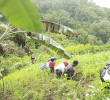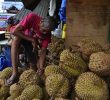by Carmela Fonbuena in Negros Occidental
Philippine Center for Investigative Journalism
The Office of the President is reviewing a decision of the Department of Agrarian Reform that grants the application for land use conversion of L.N. Agustin Farms Inc. in La Castellana, Negros Occidental. If upheld, it will hijack land distribution to almost 30 farm worker-beneficiaries under the Comprehensive Agrarian Reform Program, a social justice government program that modernizes the country’s feudal structure of agriculture by granting landless farmers and farm workers ownership of agricultural lands.

Eden Entroduction sent to the Philippine Center for Investigative Journalism (PCIJ) more than a dozen photos of the long stretch of cemented irrigation canal along the highway of Barangay Cabacungan in La Castellana, Negros Occidental.
It is proof, she said, that the land use conversion of L.N. Agustin Farms Inc., located in the barangay, is wrong.
The law is clear. Conversion of irrigated and irrigable agricultural lands is non-negotiable under the 1988 CARP and its 2009 extension law. The same is articulated in the Agriculture and Fisheries Modernization Act of 1997 and repeated in Department of Agrarian Reform (DAR) orders and decisions.
Entroduction is the chairperson of the Hacienda Vicenta Farm Workers Association (HVFWA), a group composed mostly of former farm workers at L.N. Agustin Farms Inc. in La Castellana.
Her husband and about 30 others were declared in 2012 as qualified beneficiaries of land distribution under the Comprehensive Agrarian Reform Program (CARP), a social justice government program that modernizes the country’s feudal structure of agriculture by granting landless farmers and farm workers ownership of agricultural lands.

Entroduction said the farm workers were told in 2012 that they only needed to wait for the Certificate of Land Ownership Award (CLOA) to own about one hectare each of the land of the L.N. Agustin Farms Inc. More than half of the property was to be distributed to farmers.
The farmland spans 46 hectares or about 80 percent the size of Luneta Park in the country capital, planted mostly with sugarcane and, in some areas, with rice. The farm workers were promised a total of 26 hectares under CARP. It is almost as big as the Quezon Memorial Circle in Quezon City.
They have been waiting for 12 years. At least three of the qualified farm worker-beneficiaries have died without seeing CARP’s promise.
Many of the farm workers, including Entroduction’s husband, have been dismissed from their jobs and evicted from their homes in the farm.
(WATCH: Ditsi Carolino’s short documentary on the struggles of Hacienda Vicenta’s farm workers)
In August 2020, DAR granted the landowner’s application for land use conversion. The farm workers filed a motion for reconsideration, but it was denied in finality in June 2021.
If DAR’s decision is implemented, the farm workers would have waited for nothing.
With the help of volunteer lawyers, the farm workers sought the intervention of the Office of the President, where it is pending.
The farm workers have also secured a certification from the National Irrigation Authority (NIA) that the farmland is within the service area of an irrigation system, although this document was issued only in July 2022 and was not available during DAR’s hearings.
Entroduction met with PCIJ in May in Bacolod City, where she narrated how farm workers have been trying to convince the government that the irrigation canal exists.
She politely declined to bring journalists to the area. “Not right now. It might cause tension,” she told PCIJ.
PCIJ reached out to the L.N. Agustin Farms Inc. but received no response as of this writing.
PCIJ also asked the Office of the President for an update on the review. Malacañang’s Legal Office said “any information or document relative to the cases filed… is given only to the parties themselves, their counsel of record or their representatives.”
The lawyers of Hacienda Vicenta Farm Workers Association from Kaisahan told PCIJ they have not received any new update from Malacañang.
1997 document says the farmland is not irrigated?
The orange archway in Entroduction’s photos can also be seen on Google Street View. The cemented irrigation canal is visible on the satellite view, clearer than the photos she sent.
How did the application for land use conversion succeed?
PCIJ obtained copies of DAR decisions and documents submitted to the department in relation to the case. Land reform advocates said it is an example of how landowners have used conversion to evade CARP coverage of their lands.
L.N. Agustin Farms Inc, represented by Aymer Agustin, obtained a NIA certification stating that the farmland is not irrigated and not irrigable, according to documents.
The certification, cited prominently in DAR documents on the case, weighed heavily on the “final decision” to grant the application for land use conversion. PCIJ does not have a copy of the NIA certification itself.
The certification is described in documents as coming from the NIA regional office in Iloilo City – located not in Negros Island but in adjacent Panay Island. It was also supposedly issued in April 1997.
If it is not a typographical error, the document is 18 years old when it was submitted to support the application for conversion.

DAR’s decision is “a most grave error” regardless of whether or not the NIA certification even exists, said Aison Garcia, a land rights lawyer who served as DAR consultant during the Aquino presidency. He has been helping the farm workers fight the DAR decision.
Garcia, working with PCIJ, requested DAR in 2023 for the a copy of the NIA certification. He was not given a copy of the document. He said the farmers originally suspected then that the landowner must have submitted a spurious document.
Even if a 1997 NIA document exists, Garcia said the certification is “wrong” because – even assuming that the irrigation system was not yet built at the time – the land was clearly irrigable.
It is very easy to verify that the land is irrigated or irrigable, Garcia said.
“It’s simple. All they need to do is go to the area and verify by looking at the land. Visit the land and check it first hand,” he told PCIJ.
DAR Secretary originally denied landowner’s application
A DAR team did, in fact, conduct an onsite inspection and investigation of the farmland and verified the existence of a cemented irrigation canal in the farmland.
The Land Use Cases Division Inspection Team of the Bureau of Agrarian Legal Assistance (BALA) submitted a report belying the certification from the NIA regional office, complete with photo and video attachments.
The result of the onsite inspection shaped an earlier decision, dated November 2018, by then DAR Secretary John Castriciones. The highest official of the department himself denied the application for conversion.
“Notwithstanding the finding of the NIA on the irrigation status of the subject land, this office finds credence to the findings of the OSII (Onsite Inspection and Investigation) report and video footage which show the existence of the concrete canal with running water,” Castriciones’ ruling read.
“There is no doubt that the land has not ceased to be economically feasible and sound for agricultural purposes. The presence of a cemented canal with running water on lot 1059 is a manifestation that the subject area is irrigated. All irrigated agri land with irrigation facilities are classified as” areas non-negotiable for conversion; hence shall not be given due course even when some portions are eligible for conversion,” Castriciones added.
Castriciones also recognized that a big chunk of the farmland was already placed under CARP coverage.
“[It] can no longer be subject of conversion order as landholding has already been placed within the ambit of agrarian reform more than 2 years before application of conversion was filed,” he said.
LUCC enters the picture
The landowner filed a motion for reconsideration of the Decision of the DAR Secretary, insisting that the land was not irrigated and was no longer fit for agricultural use.
Almost two years later, in August 2020, the DAR Secretary Castriciones was set aside by a committee that he himself created.
DAR’s Land Use Cases Committee (LUCC) was a new creation during his time. It is a “collegial body” he created and deputized to make decisions on land use conversion and exemptions and exclusion from CARP coverage.”
It was created in March 2019 or four months after Castriciones denied the conversion of Hacienda Vicenta. In an interview with PCIJ, Castriciones said the LUCC was created to“avoid corruption” in the department because it meant more people would be involved in the decisionmaking.
Castriciones said he can no longer remember the case, but he said he would be surprised if the LUCC set aside his ruling. “It is unlikely for the LUCC to reverse it. That is very unusual,” he told PCIJ.
LUCC favored Agustin’s claim and upheld the certification of NIA’s regional office supporting the landowner’s position that the farmland was not irrigated.
“NIA, being the government agency with competency and expertise on matter, this Office deems it proper to give credence to the findings of the former. Hence, this Office reverses its findings that the landholdings are irrigated, thus, not eligible for conversion,” the LUCC’s ruling read.
There was no mention of the onsite inspection conducted by the DAR team, which belied the NIA certification. “The best evidence rule is you visit the place and take a look whether it’s irrigated,” said Castriciones. DAR’s inspection teams are usually conducted by a group of people, he said.
The volunteer lawyers were surprised to learn that the landowner was able to secure a NIA certification supporting the application for conversion. The document was not shared with the farm workers and their lawyers during DAR’s deliberations.
“Nagulat kami bakit mayroon silang pinagbasehan daw ng NIA na hindi irrigated ang area,” said Jec Magbato, project officer of Kaisahan, an NGO helping the farmers of Hacienda Vicenta.
Apart from the NIA certification, the LUCC ruling said a Department of Agriculture certification, stating that the property was eligible for reclassification, substantiated that the “lands are ripe for land use conversion.”
The LUCC also cited documents from other government offices supporting the landowner’s application.
The farm workers filed a motion for reconsideration. LUCC denied it. DAR issued an “order of finality” on June 8, 2021.
The volunteer lawyers failed to secure a certification from the local NIA office when DAR was deliberating the case.
“Walang time (There was no time),” said Magbato. But they submitted copies of the surveys conducted by DAR, showing the existence of the irrigation canal. They also submitted receipts for payments that the farm made to NIA for the water services.
They were unable to file a protest when the landowner filed the application. Entroduction said they rushed to collect available documents to file a motion for reconsideration when they learned that the application was approved.
Entroduction said DAR failed to give them regular updates on the status of their CLOA and inform them about the landowner’s application.
Regardless, the decision of the LUCC is irregular, said Garcia. “How could a DAR committee reverse a decision of a Secretary?”
“My decision was correct,” Castriciones told PCIJ.
Farmers run to Malacañang
According to LUCC’s own rules, a final decision of the LUCC can no longer be reviewed by the DAR Secretary. With the help of volunteer lawyers, the farm workers sought the intervention of the Office of the President.
The Duterte administration entertained the appeal filed by the farm workers, but DAR failed to comply with requests for copies of the case files.
It would take repeated requests from the Marcos administration, which inherited the case, to compel DAR’s BALA to send a team to Iloilo City and finally retrieve the case files in June 2023.
Magbato said the injustice needs to be corrected.
“Klarong klaro na irrigated ang area. Kung hindi man irrigated ang buong portion na ina-apply-an niya ay irrigable naman. Klaro sa CARP na kapag irrigated at irrigable, non-negotiable for conversion,” Magbato said.
There is no way the Marcos administration should not favor the farm workers, Entroduction said.
“Mayroon naman kaming NIA certification. Hindi naman makatarungan [na hindi namin makuha ang lupa],” she said.
In July 2022, at the beginning of the Marcos administration, the farm workers were finally able to secure a certification from the NIA’s provincial office in Negros Occidental. The local NIA affirmed that the lot placed under CARP is “within the service area” of the Cabacungan Communal Irrigation System.
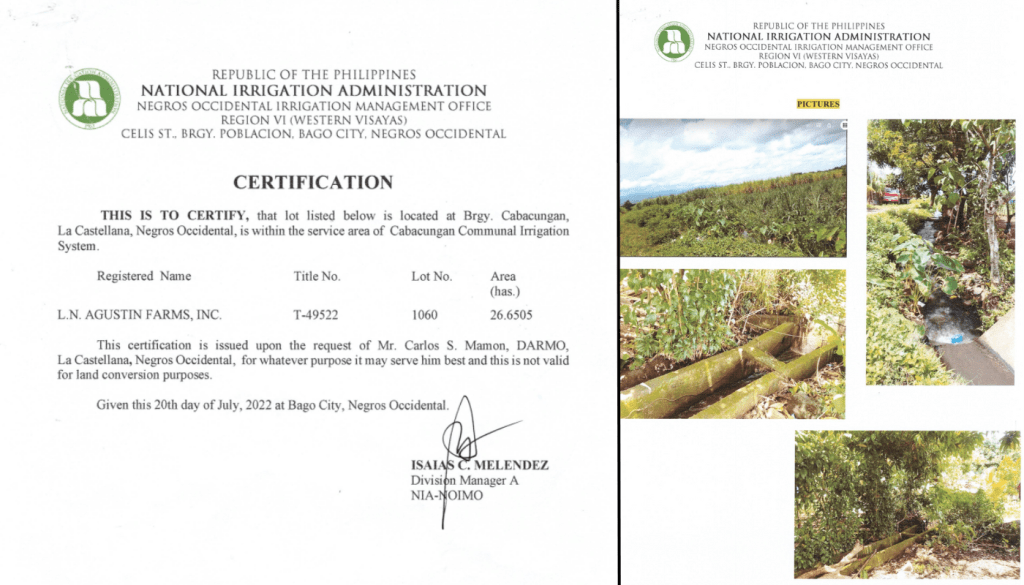
With the new certification, the farm workers are hoping it will settle the case once and for all.
“If that is the case (there is a NIA certification), it means it is irrigated. It cannot be converted. That is one of the requirements of the law,” said Castriciones.
Malacañang’s review is pending.
Farm workers’ long wait
L.N. Agustin Farms is divided into three lots on paper – Lot 1046, 1059, and 1060. The irrigation canal is located on Lot 1059. Irrigation water pumps distribute water from the canal to the other lots.
DAR had placed the biggest of the three lots – Lot 1060 – under CARP in 2012 or three years before the application for land use conversion was filed in June 2015. It is 26 hectares or more than half of the total land area, almost as big as Quezon Memorial Circle in Quezon City.
A notice of coverage was issued to 29 farm workers – those who plowed the fields, planted and fertilized sugarcane and rice, and harvested the crops. Each one was entitled to almost one hectare of land.

The CARP process, albeit slow, was moving until 2019 or a year before the application for land use conversion was granted.
Based on Castriciones’ 2018 decision, which ordered the landholding to be placed under CARP coverage, the government acquired Lot 1060 despite the lawndowner’s opposition.
It was converted to an “RP title,” one of the final steps before a CLOA is issued to the qualified farm worker-beneficiaries.
But the CARP process would be overtaken by the landowner’s application. The RP title was ordered canceled when the application for land use conversion was granted in 2020.
“Nagkabanggaan daw ang dalawang kaso,” said Entroduction. The landowner won.
The surviving beneficiaries and the children of the deceased continue to wait.
Entroduction said the farm workers are nervous about Malacañang’s decision, but they remain hopeful that soon they could finally own the land.
“Lahat ng kasamahan namin medyo may pag-asa pero may kaunting takot,” she said.
She was visibly angry throughout the interview, afraid of the possibility that Malacañang would favor the landowner.
She broke into a big smile only when asked what the farmers would do if Malacañang favored their appeal and they’re awarded the CLOA.
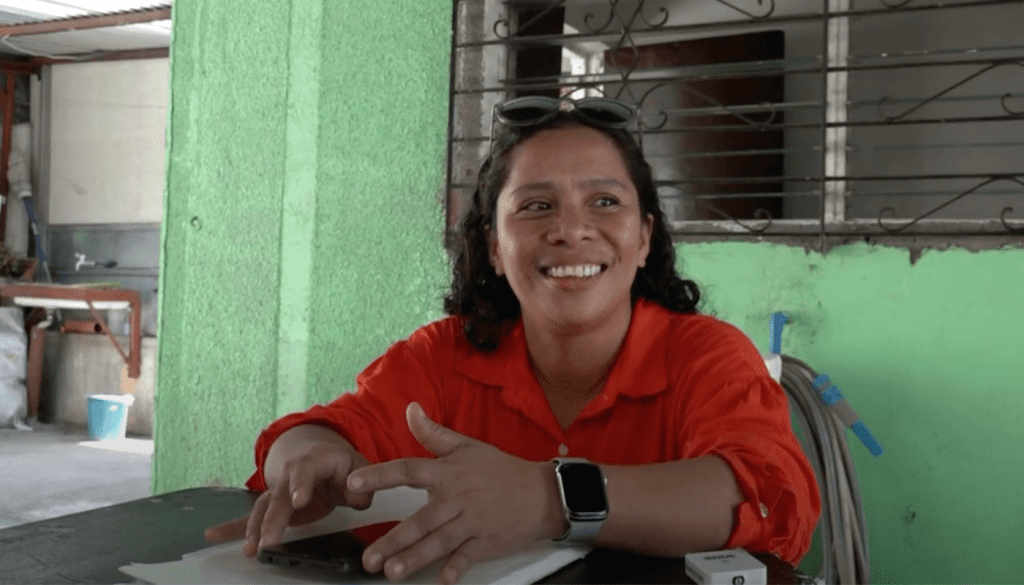
“We will cultivate the land,” she told PCIJ. “We can’t plant sugarcane yet because we won’t immediately get financial support. We might plant vegetables first. Or bananas,” she said, beaming with hope.
The total land area that will be distributed to the farm workers, if they win the appeal, is about four hectares short of 30 hectares to qualify for block farming. This would have allowed them more access to government financial support.
They said the two other lots should also be placed under CARP, but that will be a different battle. Meanwhile, they will have to find money to be able to plant sugarcane, she said, because it will make them more productive.
“Maraming pwedeng gawin kasi may tubig,” she said.
El Niño underscores food security challenges
As Malacanang reviewed the case, El Niño’s damage to farms in La Castellana town has reached P197 million as of April. Huge vasts of farms dried up before the rains came in May, depriving farmers of their harvest this season.
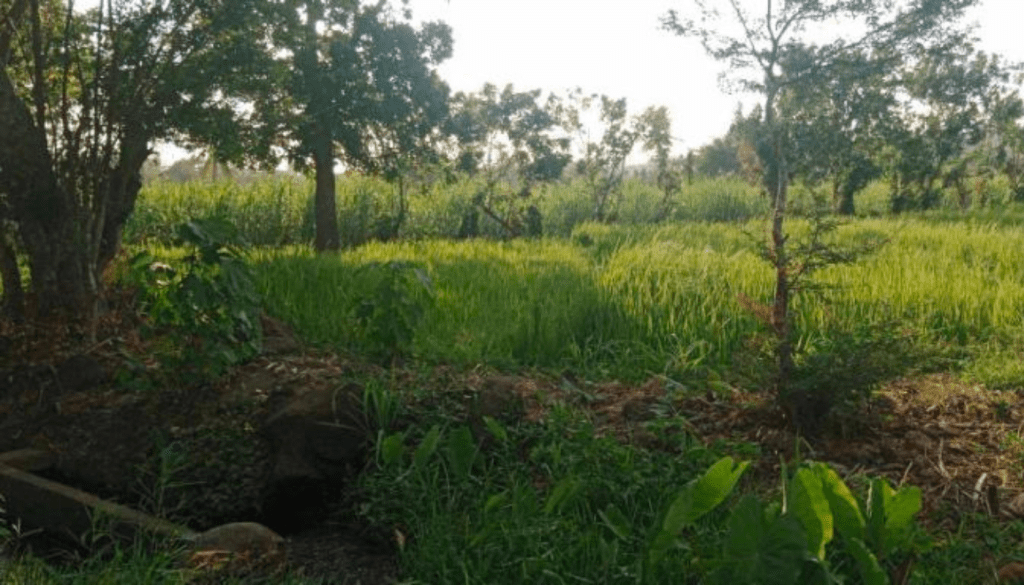
All over the country, the government reported that damage to agriculture due to El Niño has reached more than P9 billion as of early June 2024. More than 400 cities and towns have declared a state of calamity mostly due to shortage of water for irrigation.
Garcia said the widespread damage to farms of long dry spells in the past year drives home the importance of preserving prime agricultural lands for food security.
Not all farms are damaged. In Negros Occidental, along the national highway, it’s clear which farms are irrigated and which are not. Endless rows of tall and green sugarcane plants make for a spectacular sight on one side of the road, especially against dried-up farms on the other.
Hacienda Vicenta was a picturesque green. (reposted by davaotoday.com)
About the Promise of Land Reform investigation
PCIJ begins its investigation re-examining land reform in the Philippines as President Ferdinand Marcos Jr. promises to complete distribution of land to Agrarian Reform Beneficiaries before his term ends in 2028. More than three decades since the implementation of the Comprehensive Agrarian Reform Program, PCIJ’s investigation will look at the links between land reform, food production, food security, poverty reduction, economic development, and environmental sustainability.
agrarian reform, farmers, PCIJ, philippines
